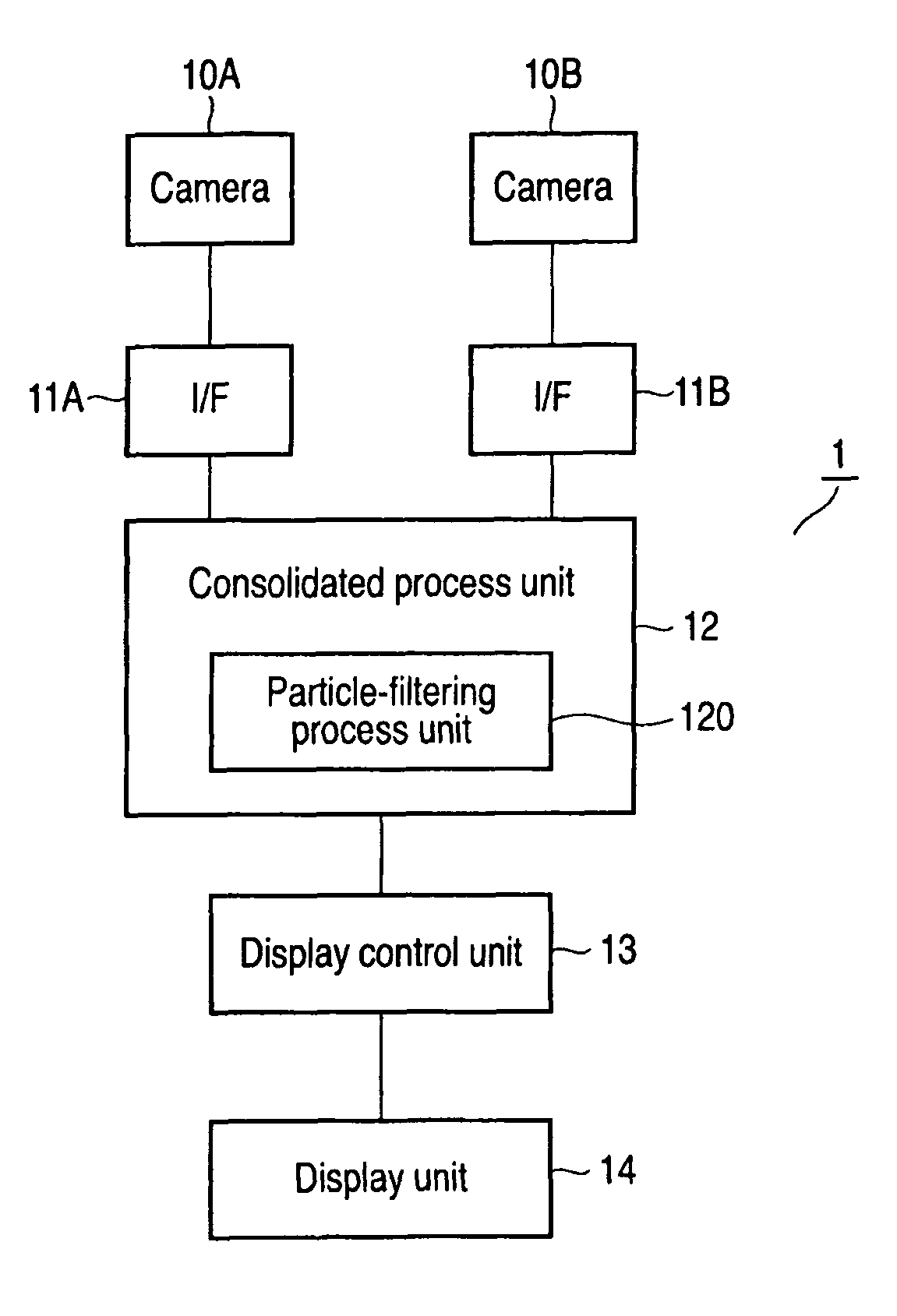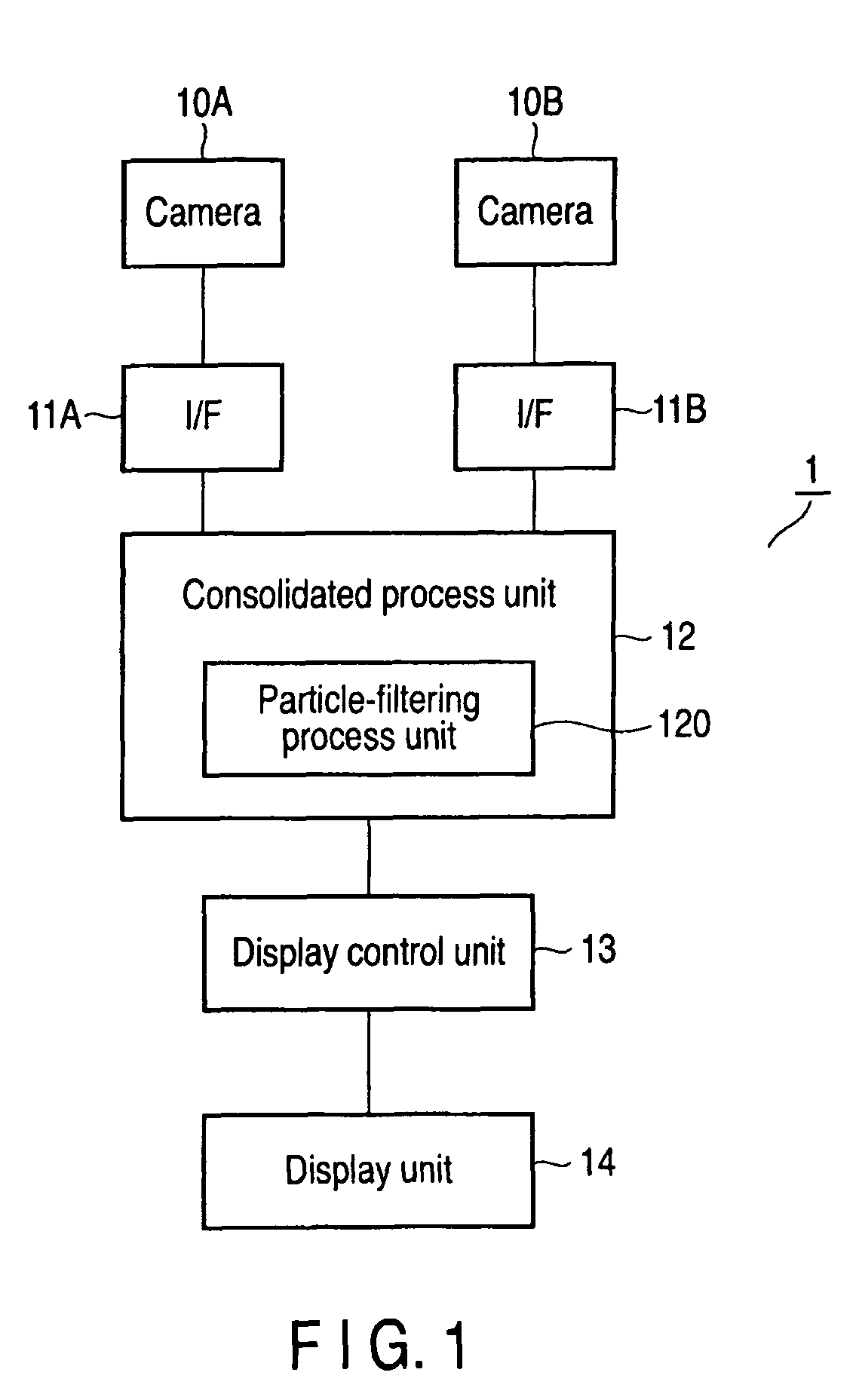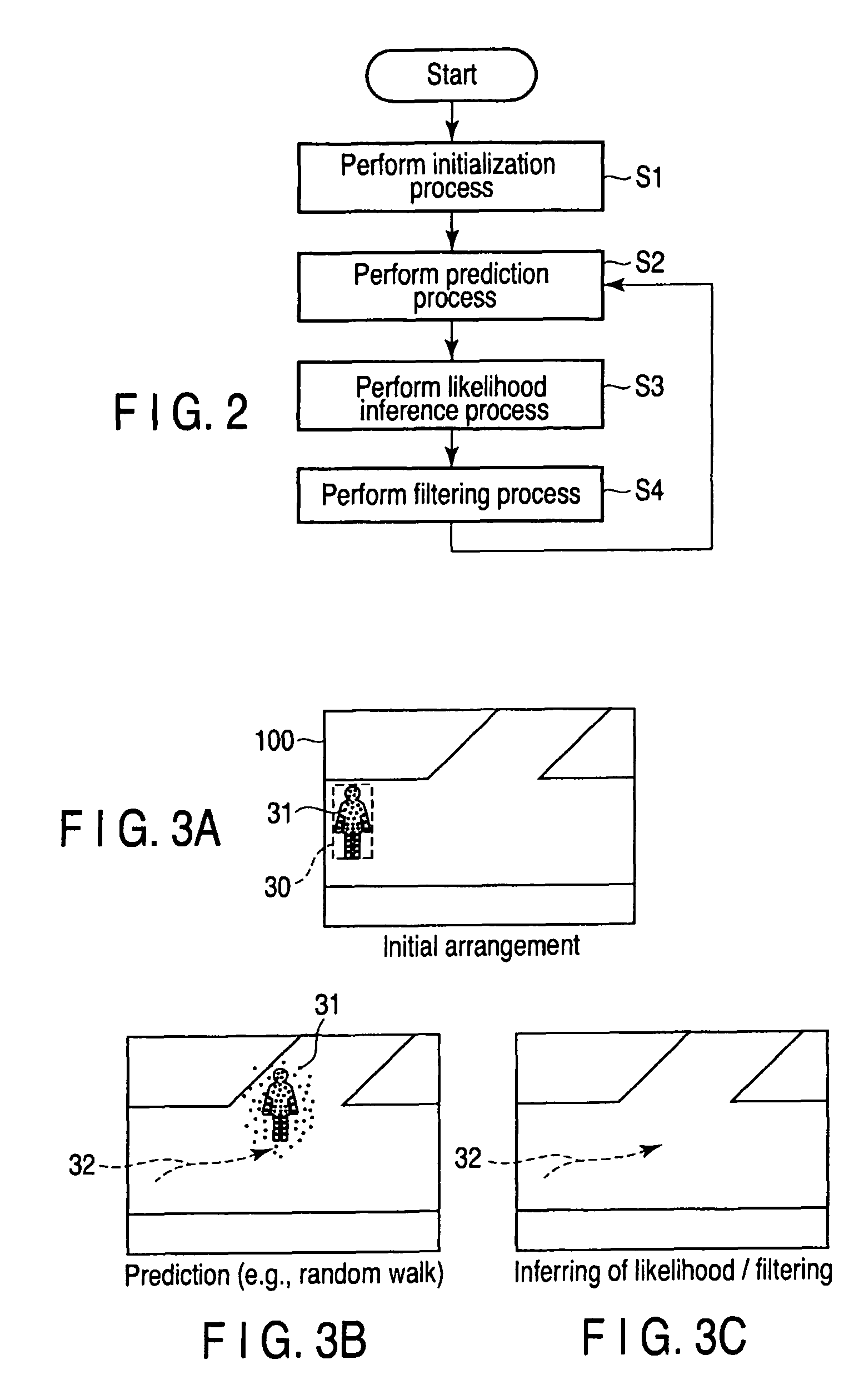System for tracking a moving object, by using particle filtering
a technology for moving objects and systems, applied in television systems, instruments, lighting and heating apparatuses, etc., can solve the problems of inability to detect objects, disadvantageous tracking methods, and decreased tracking ability in that region, and achieve the effect of increasing the ability to track moving objects
- Summary
- Abstract
- Description
- Claims
- Application Information
AI Technical Summary
Benefits of technology
Problems solved by technology
Method used
Image
Examples
first embodiment
(Configuration of the System)
[0033]FIG. 1 is a block diagram showing the major components of a tracking system 1 according to a first embodiment.
[0034]As FIG. 1 shows, the tracking system 1 has first and second cameras 10A and 10B, interfaces 11A and 11B, a consolidated process unit 12, a display control unit 13, and a display unit 14. The interfaces 11A and 11B are connected to the cameras 10A and 10B, respectively.
[0035]The first and second cameras 10A and 10B are installed in, for example, a building. They are video cameras for photographing moving objects, such as men walking in the building. The interface 11A processes the video data acquired by the camera 10A, generating a digital video signal. Similarly, the interface 11B processes the video data acquired by the camera 10B, generating a digital video signal. The digital video signals are supplied to the consolidated process unit 12.
[0036]The consolidated process unit 12 is a main unit of the tracking system 1. The unit 12 is ...
second embodiment
[0054]FIGS. 6A to 6C, 7A to 7C, and 8 are a diagram explaining the operation of a particle filter 120 according to a second embodiment of this invention. This particle filter 120 is incorporated in a tracking system that is identical in configuration to the tracking system 1 shown in FIG. 1. Therefore, the tracking system according to the second embodiment will not be described.
[0055]The particle filter 120 according to this embodiment has the function of cancelling occlusion that may occur while the tracking method is being performed after the initialization process (i.e., initial arranging and rearranging of particles), prediction process and likelihood inference process.
[0056]Occlusion is a phenomenon that may occur if, for example, some persons are photographed, one overlapping another. If occlusion happens, the image photographed will be shadowed, in part or entirety, and cannot be recognized. If the occlusion happens, only the person standing foremost will have high likelihood...
third embodiment
[0065]FIGS. 9 to 11 are diagrams explaining how a particle filter 120 according to a third embodiment of the invention operates. In this embodiment, too, the tracking system incorporating the particle filter 120 is identical in configuration to the tracking system 1 shown in FIG. 1. Therefore, the tracking system according to the third embodiment will not be described.
[0066]The particle filter 120 according to this embodiment has the function of controlling the likelihood value in the likelihood inference process, after the above-mentioned initialization process has been completed (that is, after the particles have been initially arranged and then rearranged) in the tracking method that is composed of the initialization process, prediction process, likelihood inference process and filtering process.
[0067]The particle filer 120 first defines the characteristic value of the moving object to track, such as a man, as a likelihood function, and then infers the likelihood each particle ar...
PUM
 Login to View More
Login to View More Abstract
Description
Claims
Application Information
 Login to View More
Login to View More - R&D
- Intellectual Property
- Life Sciences
- Materials
- Tech Scout
- Unparalleled Data Quality
- Higher Quality Content
- 60% Fewer Hallucinations
Browse by: Latest US Patents, China's latest patents, Technical Efficacy Thesaurus, Application Domain, Technology Topic, Popular Technical Reports.
© 2025 PatSnap. All rights reserved.Legal|Privacy policy|Modern Slavery Act Transparency Statement|Sitemap|About US| Contact US: help@patsnap.com



